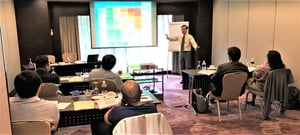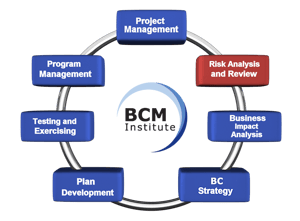Overview
At this stage, you are about to attend the first BCM workshop organised in-house. It may be useful if you have not read the first two articles regarding how this project started, you may want to read "[1a] Starting the Project" and "[1b] Developing BCM Structure and Framework."
This article is the second part of the "Training Led BCM Consulting Project" series. This is the reading for participants embarking on a BCM implementation using a combination of training with specific targeted consulting support to develop, implement and finalize its BCM program for an organisation.
This "Risk Analysis and Review" or "RAR" phase involved the "Running a risk assessment" using competency-based training entails the following steps.
What should participants do:
Participants are encouraged to read through the supplementary material and write down any questions they may have. Example of Reading includes "Assessing Your Risk" - What is:
2. Workshop [Online]
 A workshop will be conducted to guide project participants to identify, analyse and evaluate their risks. The consultant will also use this time to explain the more difficult concepts on risk. A set of templates is used to facilitate this process.
A workshop will be conducted to guide project participants to identify, analyse and evaluate their risks. The consultant will also use this time to explain the more difficult concepts on risk. A set of templates is used to facilitate this process.
What should participants do:
 Participants should have read the supplementary materials and come prepared to ask questions. Handouts and templates will be sent to them before the workshop, and participants are strongly encouraged to bring along their laptops with the templates loaded, as we will be working on the templates during the workshop.
Participants should have read the supplementary materials and come prepared to ask questions. Handouts and templates will be sent to them before the workshop, and participants are strongly encouraged to bring along their laptops with the templates loaded, as we will be working on the templates during the workshop.
Note that because the workshop is a 1-time group event, it is important that participants lock this event in their calendars. No repeat workshop will be conducted for absent participants as the objective is to have everybody within the organisation complete this phase together within the allocated time.
3. Consultation
After the workshop, participants will have one week to complete and submit the templates to their BCM Manager or Organisation BCM Coordinator, who will consolidate the templates and send the batch to the consultant.
A consultation and assessment session (approx. 30 mins) has been arranged for individual business units to go through the templates with their completed submission with the consultants.
What should participants to:
- Submit the risk assessment templates to your Organisational BCM Coordinator on time
- Before the consultation & assessment session, review your templates, and quickly read through the course materials
- Attend the consultation session at the appointed time
- If there are any changes required, submit a revised completed template to your Organisational BCM Coordinator.
The consultant will process the templates from all departments and write a report for submission to the organisation's management.
4. Public Course
The strength of this program is the continuity of BCM knowledge should there be a replacement to the officer responsible for BCM. If you are attending a public BCM course, this course is similar to the morning session for the BCM-300 (Course code) and it is titled as "ISO 22301 BCMS Implementer" course.
During this two-day course, you are required to bring your documentation and update the content during the second day of the course.





